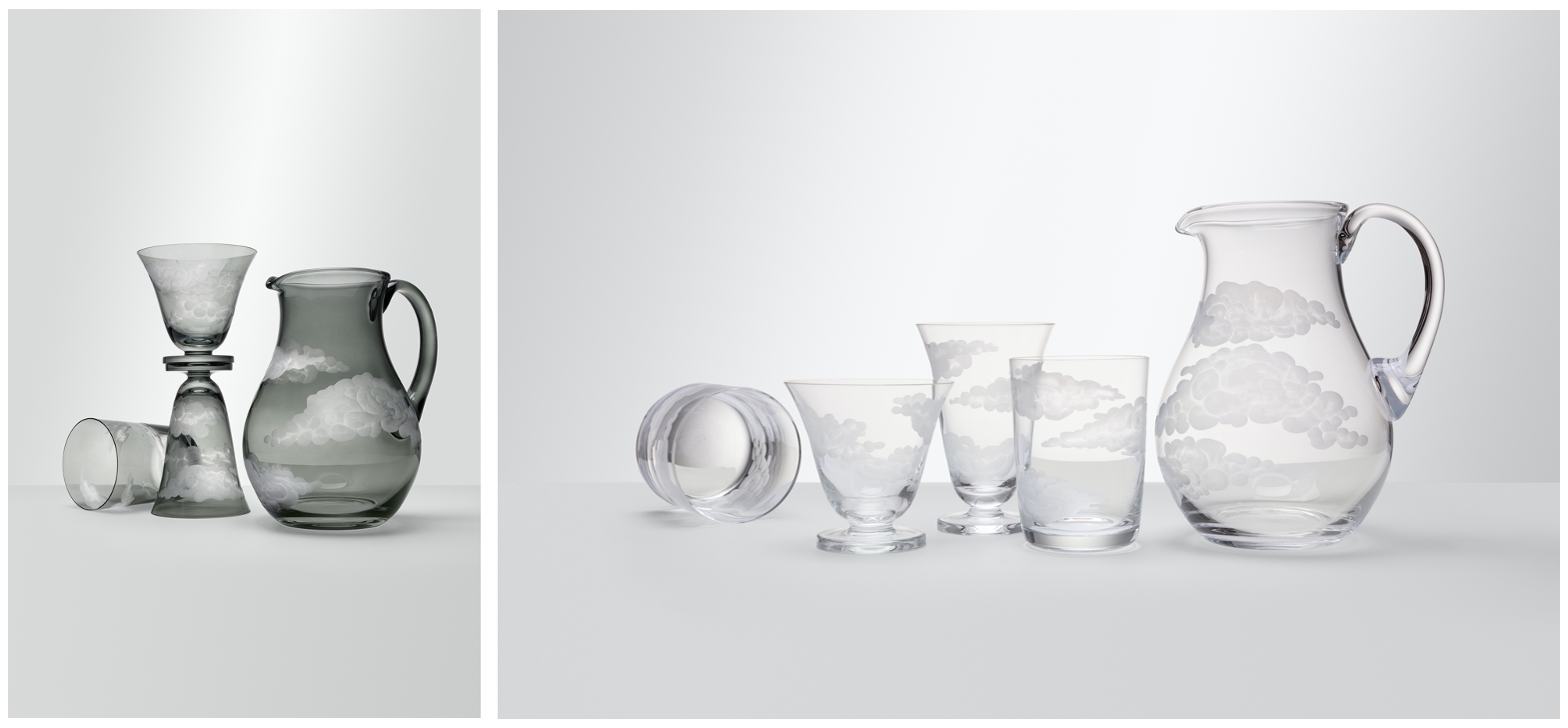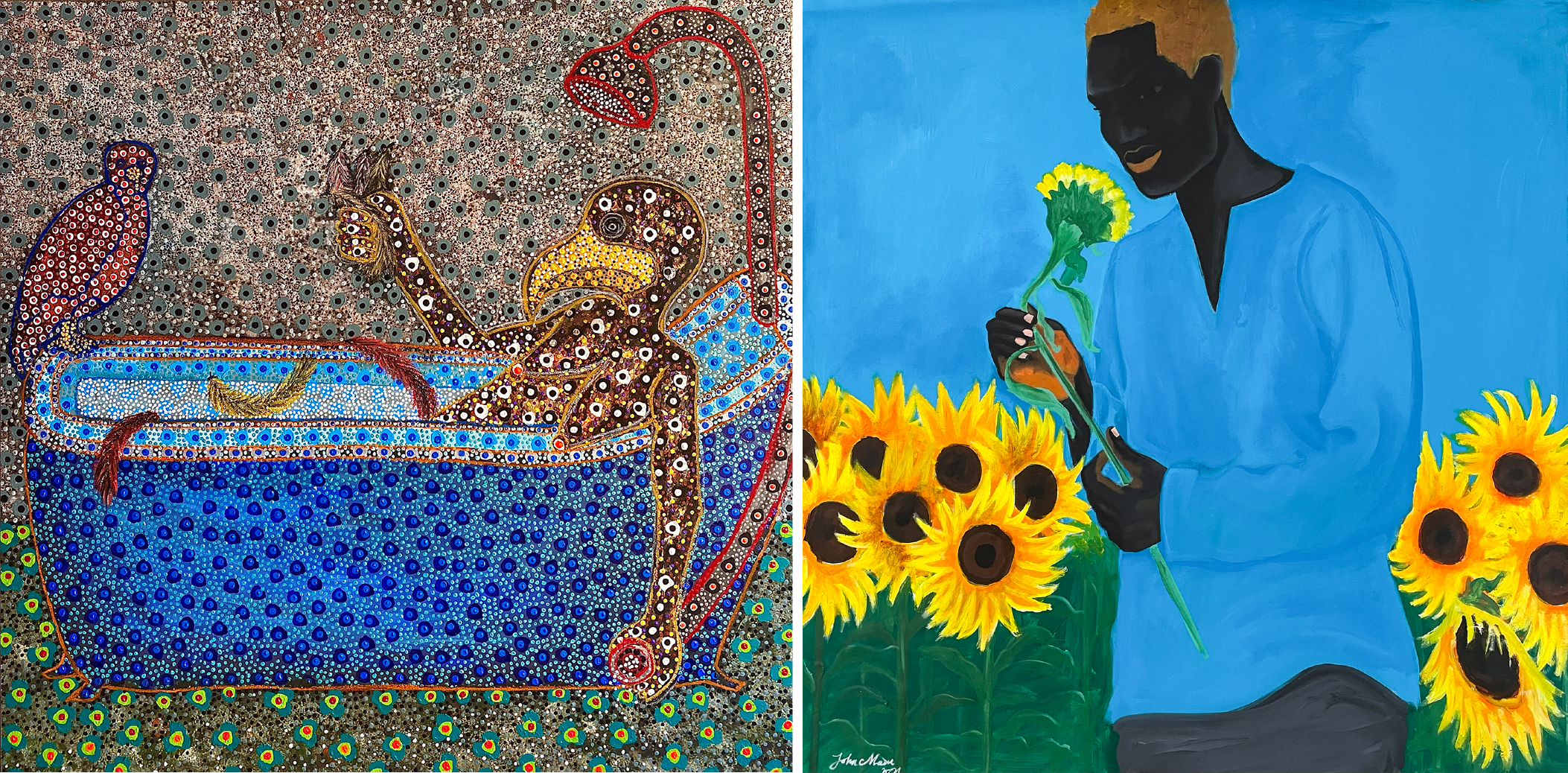1-54 London | AFIKARIS Gallery, Paris
14—17 October 2021
Preview: Thursday 14 October, 10AM—8PM
Somerset House | Strand, WC2R 1LA London
Above. Nana Yaw Oduro, If we play like this, we stand a chance, 2021 Photography. 67 x 100 cm, Edition of 4 + 2 AP. 40 x 60 cm, Edition of 8 + 2 AP. Courtesy of AFIKARIS Gallery and the artist. Below, Moustapha Baidi Oumarou, Jour de Loumo Baliii, 2021. Acrylic and posca on canvas. 180 x 120 cm. Courtesy of AFIKARIS Gallery and the artist.
October 4, 2021 (Paris, France) – On the occasion of the 1-54 art fair in London, Paris-based AFIKARIS Gallery unveils new works by artists Moustapha Baidi Oumarou (b.1997, Maroua, Cameroon), Salifou Lindou (b.1965, Doula, Cameroon), Omar Mahfoudi (b. 1981, Tangier, Morocco) and Nana Yaw Oduro (b. 1994, Accra, Ghana).
Under the title A Better World?, the dialogue between Moustapha Baidi Oumarou, Salifou Lindou, Omar Mahfoudi and Nana Yaw Oduro unfolds as a reflection on recurring sociopolitical trends and thoughts, heightened during the time of the pandemic and resulting lockdown. Presented together, the artists join in a common, aspirational yet realistic call for hope and for a new departure in current times – all-the-while pointing to its limits.
Nana Yaw Oduro’s photographic series If we play like this, we stand a chance, presented alongside Moustapha Baidi Oumarou’s joyful and pure portraits, exude a sense of both yearning and hope – one which Omar Mahfoudi cultivates through his suspended rêverie as he embarks viewers in a spiritual exile. If his landscapes heave a dreamlike breath, the politicians depicted by Salifou Lindou question the possibility of a new world. Is it truly possible for circumstances to change when those who govern us do not change?
The pandemic transformed our vision of the world, pushing us to rethink the way in which we live, to change our habits to build a better future. At once a longing and a questioning, A Better World? calls on these reflections through the vision of four artists.
---
NOTES TO EDITORS:
About Moustapha Baidi Oumarou:
Moustapha Baidi Oumarou (b. 1997, Maroua, Cameroon) is a multidisciplinary artist who works and lives in Maroua. A self-taught artist, Baidi Oumarou describes himself as a “conscious and humanist painter.” This humanism shows through his paintings and drawings, in an attempt to relay what the forgotten and most vulnerable cannot express with words.
Most often laying out monochrome backgrounds and human shapes adorned with flowers, his colorful canvases, made in acrylic, translate the good within each of us. Naturally, his delicate and subtle outlines, immersed in a lush nature, evoke a moment of sharing, conviviality, or even introspection. By anonymizing his characters, his nameless yet deeply human shapes suggest a universal message of peace and humanity.
Baidi Oumarou’s work has been featured in notable international fairs such as Art Paris (Paris); 1-54 London (London); Investec Cape Town (Cape Town); and AKAA (Paris).
About Salifou Lindou:
Salifou Lindou (b. 1965, Douala, Cameroon) is a multidisciplinary artist who works and lives in Douala. A self-taught artist, Lindou is part of the former generations of Cameroonian artists now passing the torch to a new, globalized generation.
If Lindou deals with topical issues, his striving to oppose the vulnerability of the body is a recurring theme in his work. Internal as well as external fights, stirring individuals and society, arise under his pastels. On the paper as on the canvas, Lindou explores the complexity of human beings through scenes of daily life, fed with references to legends and classics, all-the-while rooted in modern painting.
Lindou’s work has been featured in numerous international fairs such as Art Paris (Paris); 1-54 London (London); 1-54 New York (New York); ARCO Madrid (Madrid); Art Paris (Paris); and exhibition in institutions including the National Museum of Yaounde (Yaounde); Institut des Cultures de l’Islam (Paris); Art Hub Copenhagen (Copenhagen).
About Omar Mafoudi:
Omar Mahfoudi (b.1981, Tangier, Morocco) is a multidisciplinary artist who works and lives in Paris. In his art, he reinvents and rewrites the history of human beings through emotions.
Mainly working with ink and acrylic, he plays with the movement of the matter created on the surface of the canvas. His oases, timeless territories bathed in a distant light and conducive to rêverie, are fed and enriched by eclectic influences, from Brazilian photographer Sebastião Salgado’s Amazonia series to the prints of Katsushika Hokusai, as the ambient gold brings to his imagery a perception of heat and mystery.
Mahfoudi’s work has been featured in a number of international fairs such as AKAA (Paris); 1-54 London (London); and ARCO (Madrid).
About Nana Yaw Oduro:
Nana Yaw Oduro (b.1994, Accra, Ghana) is a self-taught photographer based in Accra. His photographs act as fictional self-portraits in which his models are like actors, playing a biographical role.
The stories presented in Yaw Oduro’s photographs the photographs unfold as a poetic blend of his personal emotions, evident in the colors of his environments. The chromatic treatment structures his images, producing a tangible softness and harmony between shapes and colors, between man and nature, continuously underpinning the narrative.
His work is part of the collection of the Chazen Museum (Madison, USA).
About AFIKARIS Gallery, Paris:
Founded in 2018 by Florian Azzopardi, AFIKARIS Gallery started as an online platform and showroom specialized in the work of both emerging and established artists from African and its diaspora, before opening a dedicated Paris-based gallery space in 2021. Engaged in promoting cross cultural and disciplinary exchange, AFIKARIS acts as a platform for artists to engage with the wider public. A mirror onto and space for reflection on the contemporary African art scene, it provides artists with a space to address the topical local and international issues at the heart of their art.
AFIKARIS’s curated program includes group and solo exhibitions; art fairs; publications; as well as institutional partnerships.
Currently on view:
Un Monde Bleu | October 2—November 2, 2021
AFIKARIS Gallery
38 rue Quincampoix
75004 Paris, France
info@afikaris.com
www.afikaris.com

































